Title |
| Investigations on the Cultural Economy of Media Art |
Author |
| Alessio Chierico |
Year |
| 2017 |
Publisher |
| Digicult Editions |
Description |
| “Investigations on the Cultural Economy of Media Art” is a collection of the heterogeneous perspectives that are contributing to the current discussion about the economies of the Media Art field. Acknowledging the needs of the art market and its role in the commodification and validation of art practices, this book expands its gaze to the whole setting of the art economy. Addressing the issues of conservation and distribution, as well as many other aspects impacting on this sector, a special emphasis is put on new innovative and critical models. AUTHORS INCLUDED: Paolo Cirio, Annette Doms, Vincenzo Estremo, Steve Fletcher, Marialaura Ghidini, Wolf Lieser, Jonas Lund, Rafael Lozano-Hemmer, Marco Mancuso, Rebekah Modrak, Christiane Paul, Domenico Quaranta, Christa Sommerer and Laurent Mignonneau, Gerfried Stocker, Pau Waelder |
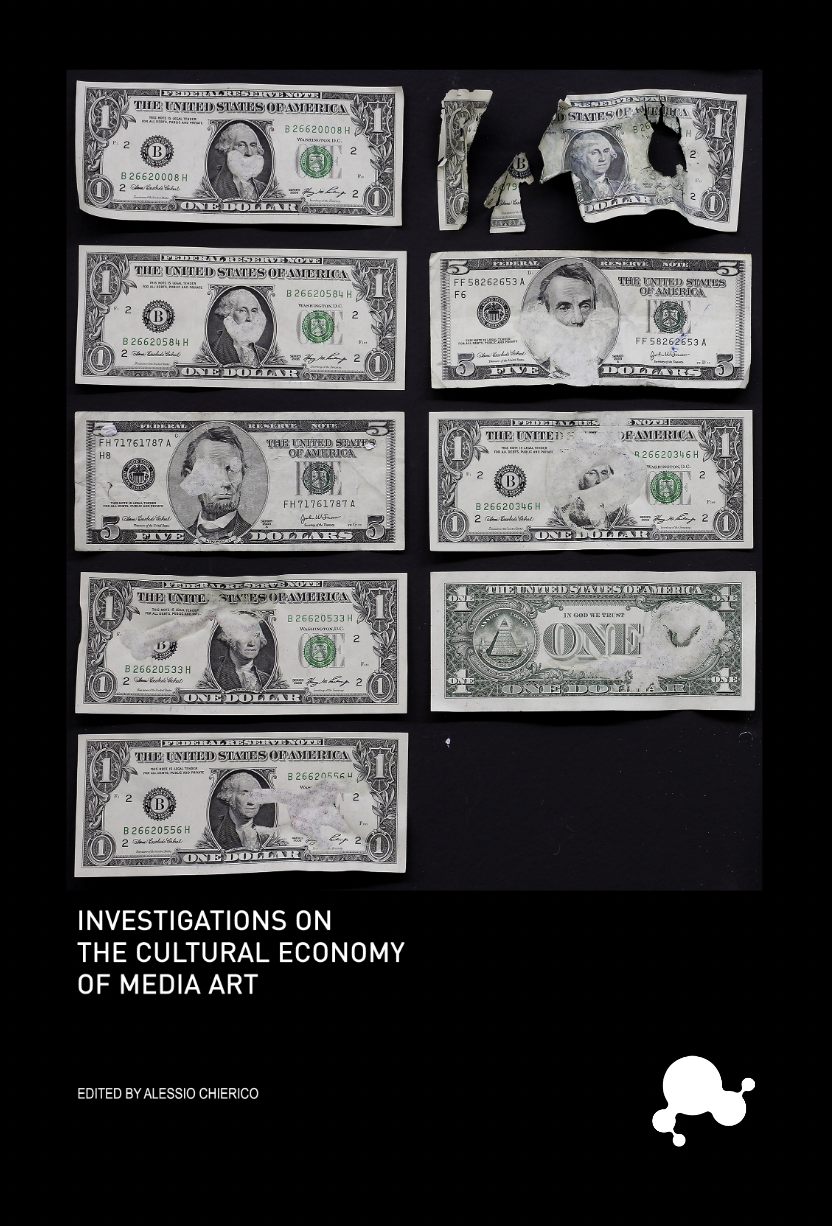 |
url |
| https://www.digicult.it/wp-content/uploads/TheCulturalEconomyOfMediaArt.pdf |
Title |
| Meta-Curating: Online Exhibitions Questioning Curatorial Practices in the Postigital Age |
Author |
| Benjamin Egger and Judith Ackermann |
Year |
| 2020 |
Publisher |
| International Journal for Digital Art History, Volume 5 |
Description |
| Curatorial activities provide (infra)structure and meaning to artworks through the selection and combination of different pieces and their public display. Therefore the way context is added shapes people’s perspective towards art. (Post-)digital art and online exhibitions come with specific constraints concerning curation and have a potential to overcome the hierarchies between curators, artists and visitors. In discussing selected digital exhibition formats from the 1990s until today, the article illustrates how the genre has evolved in response to technological changes and concepts of democratization as well as user involvement. Looking at the online exhibition “UN/NATURAL SURROGATES” (2019) the article opens up a perspective towards meta-curating that allows to conceive (online) exhibitions as a means of reflecting on curatorial processes in the postdigital era. |
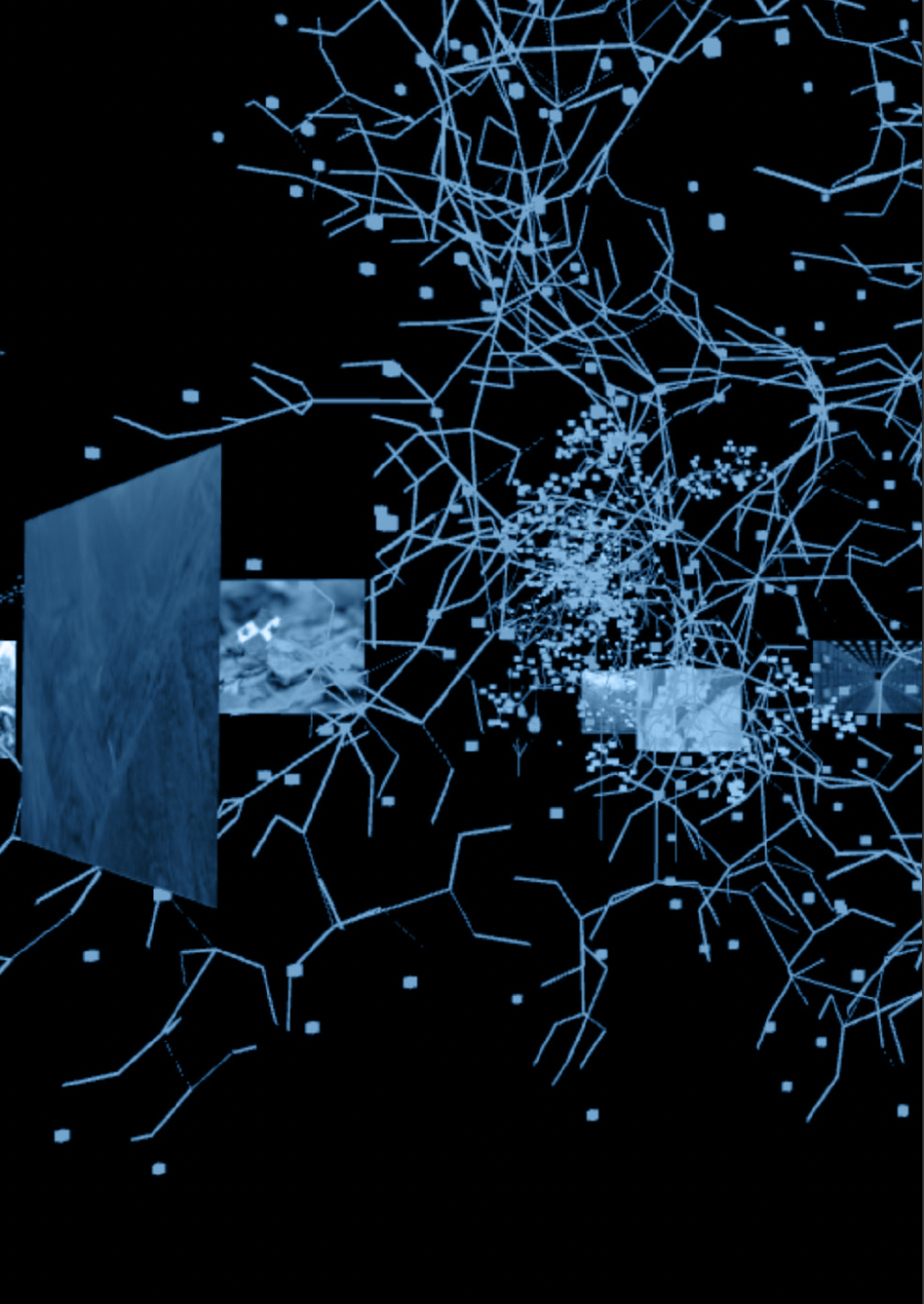 |
Title |
| Net Art 1994-1998. The Story of Äda’web |
Author |
| Domenico Quaranta |
Year |
| 2003 |
Publisher |
| Vita e Pensiero |
Description |
| The story of Äda'web covers a fundamental chronological period, from the birth of net art to its institutional recognition. The foundry also plays a leading role in both events, opening its doors when the possibility of an artistic operation on the web is anything but taken for granted and entering for the first time in the collection of a museum. Thus Äda'web raises the problematic issue of the relationship between net art and institutions, and the burning issue of the preservation of net art and all ephemeral art. The history of video art teaches us that a new means of expression is first probed in its specific technology, then welcomed "simply as another medium". Äda'web immediately tries to mediate between the art world and the world of net art, between those who experiment on the medium, playing with its possibilities and its limits, and those who simply adopt it (with technical assistance) as another tool of their operation, opening a perspective that in recent times is coming to maturity. |
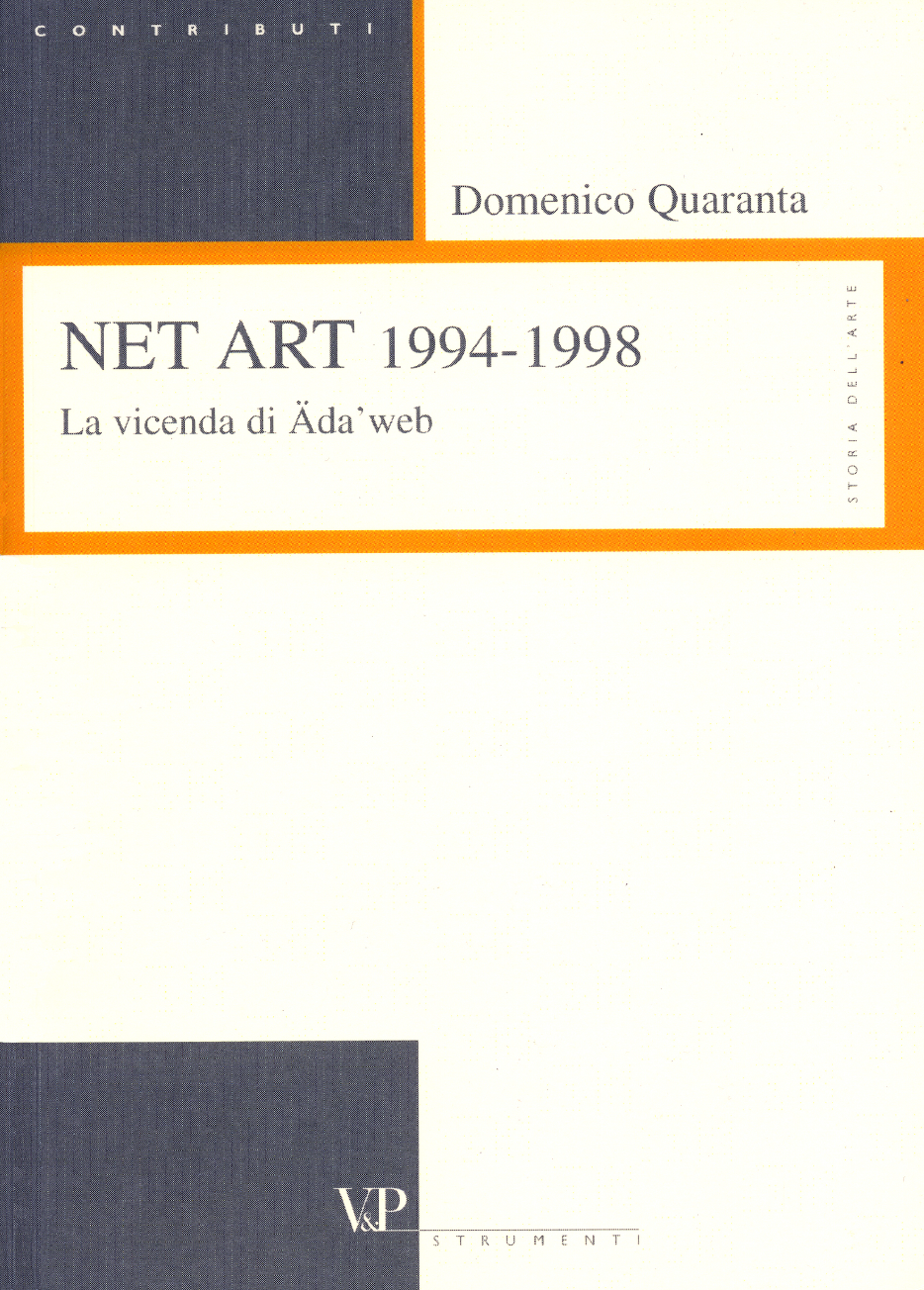 |
Title |
| Online Curatorial Practice — Flexible Contexts and ‘Democratic’ Filtering |
Author |
| Christiane Paul |
Year |
| 2009 |
Publisher |
| ARTPULSE Magazine |
Description |
| "While some aspects of the curatorial role—such as selection of works, organization of exhibits and their art-historical framing—still apply to the process of online curating, transformations occur in the process of filtering, “describing” and classifying within the online environment. The Internet is a contextual network where a different context is always only one click away, and everyone is engaged in a continuous process of creating context and re-contextualizing. Linking to and commenting on other websites creates information filters, portals, and new contexts. The continuous flow of information creates fluctuating contexts that become a “moving target” when it comes to establishing our frameworks for creating meaning. On the Internet, the spatial distance that would divide the center from the margin or text from context in the physical world is subordinated to the temporality of the link." |
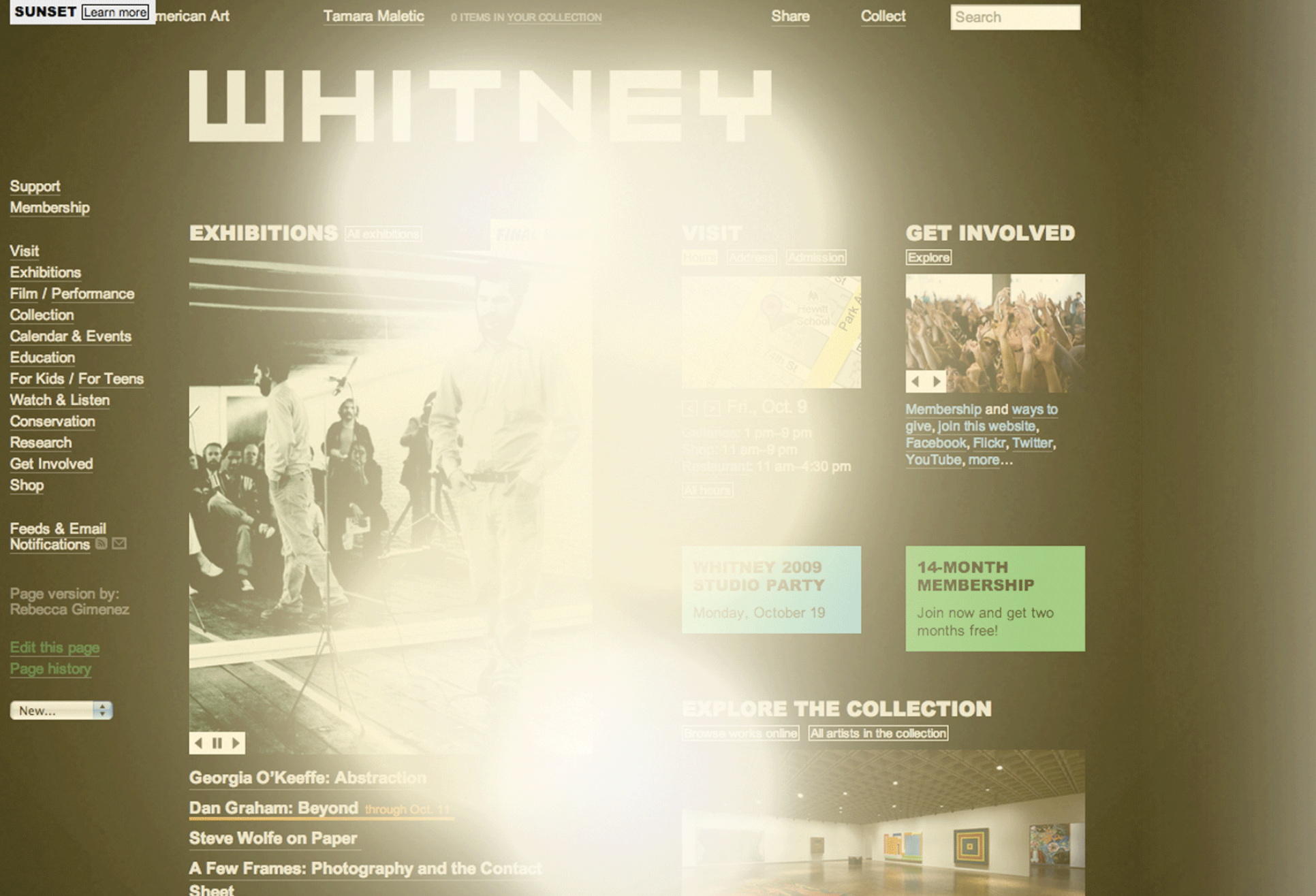 |
url |
| https://artpulsemagazine.com/online-curatorial-practice-flexible-contexts-and-democratic-filtering |
Title |
| Rethinking Curating. Art after New Media |
Author |
| Sarah Cook, Beryl Graham |
Year |
| 2010 |
Publisher |
| The MIT Press |
Description |
| Redefining curatorial practice for those working with new kinds of art. As curator Steve Dietz has observed, new media art is like contemporary art—but different. New media art involves interactivity, networks, and computation and is often about process rather than objects. New media artworks are difficult to classify according to the traditional art museum categories determined by medium, geography, and chronology and present the curator with novel challenges involving interpretation, exhibition, and dissemination. This book views these challenges as opportunities to rethink curatorial practice. It helps curators of new media art develop a set of flexible tools for working in this fast-moving field, and it offers useful lessons from curators and artists for those working in such other areas of art as distributive and participatory systems. See chapter 9: Other Modes of Curating, pp.215 |
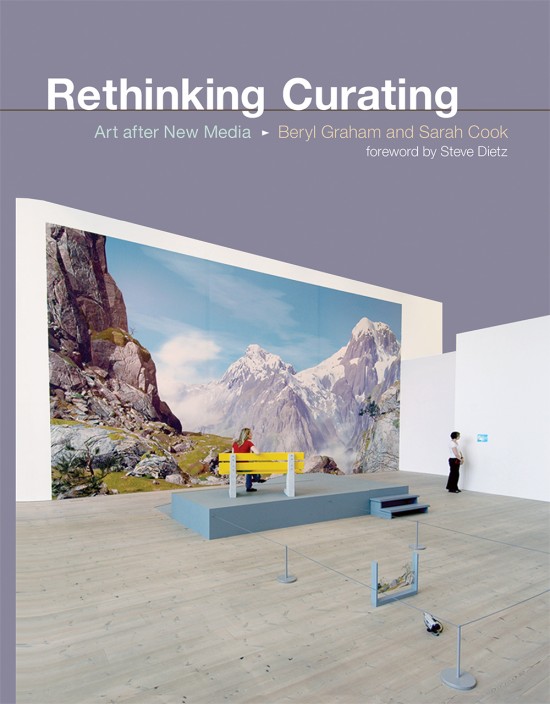 |
url |
| https://mitpress.mit.edu/books/rethinking-curating |
Title |
| Some Questions on Curating as (Public) Interface to the Art Market |
Author |
| Joasia Krysa |
Year |
| 2011 |
Publisher |
| Proceedings of the conference Public Interfaces, Journal Vol. 1, No.1, 2011, Christian Ulrik Andersen, Geoff Cox, Jacob Lund (eds.), Aarhus University, Denmark |
Description |
| The paper explores the expanded concept of public interface by establishing a link to the field of curating, in particular curating in the context of technological systems (or what commonly is referred to as ‘online curating’) and the context of the art market. The suggestion is that curatorial and technological apparatuses combine to reveal detail on the art market and its inextricable link to capitalist logic that is ever more adapting itself to the demands of the immaterial economy. The paper speculates on how the curator can be understood as an interface between the public and the art market and indeed the broader immaterial economy that lies behind it. Perhaps this has always been the case, but the significance is that new paradoxical models of curating exist for online contexts that both affirm and contest its logic. |
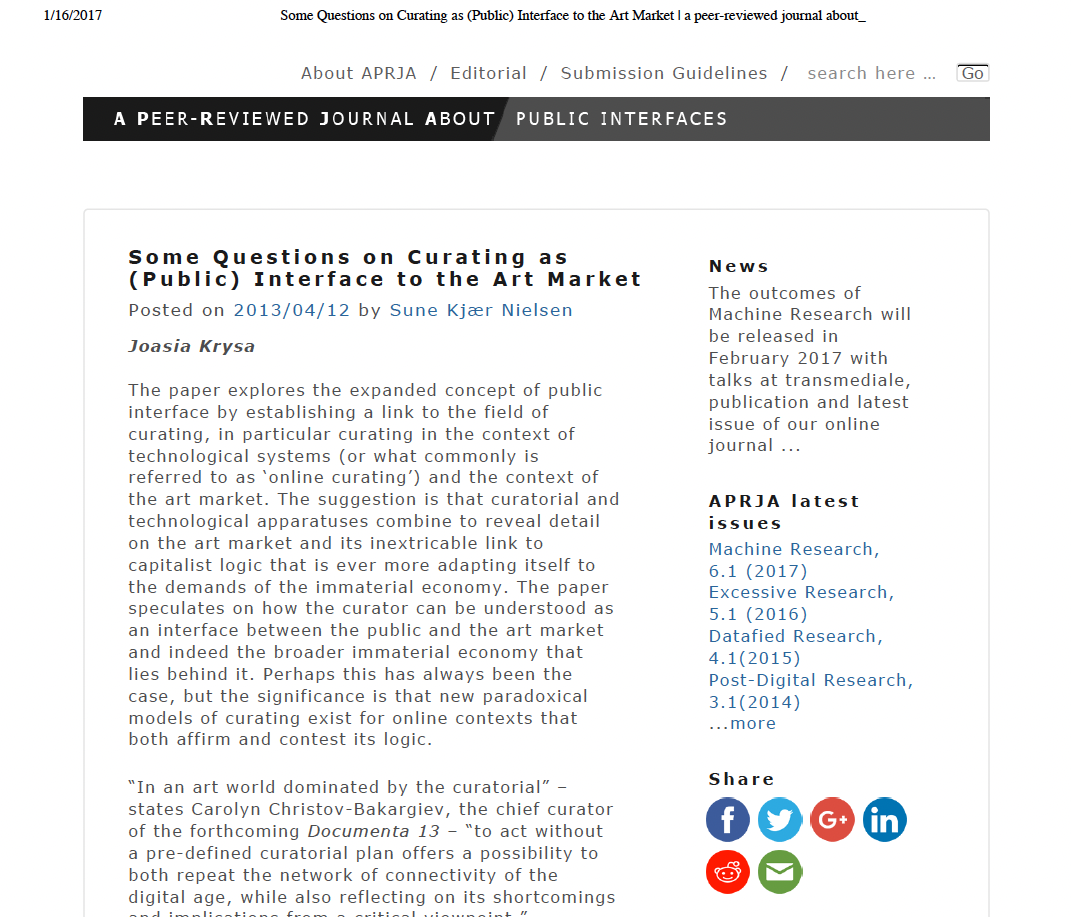 |
url |
| https://www.academia.edu/30947090/Some_Questions_on_Curating_as_Public_Interface_to_the_Art_Market |
Title |
| Speculative Scenarios |
Author |
| Annet Dekker |
Year |
| 2013 |
Publisher |
| Baltan Laboratoris, Eindhoven |
Description |
| There is a growing understanding of the use of technological tools for dissemination or mediation in the museum, but artistic experiences that are facilitated by new technologies are less familiar. Whereas the artworks’ presentation equipment becomes obsolete and software updates change settings and data feeds that are used in artworks, the language and theory relating to these works is still being formulated. To better produce, present and preserve digital works, an understanding of their history and the material is required to undertake any in-depth inquiry into the subject. In an attempt to fill some gaps the authors in this publication discuss digital aesthetics, the notion of the archive and the function of social memory. These essays and interviews are punctuated by three future scenarios in which the authors speculate on the role and function of digital arts, artists and art organisations. |
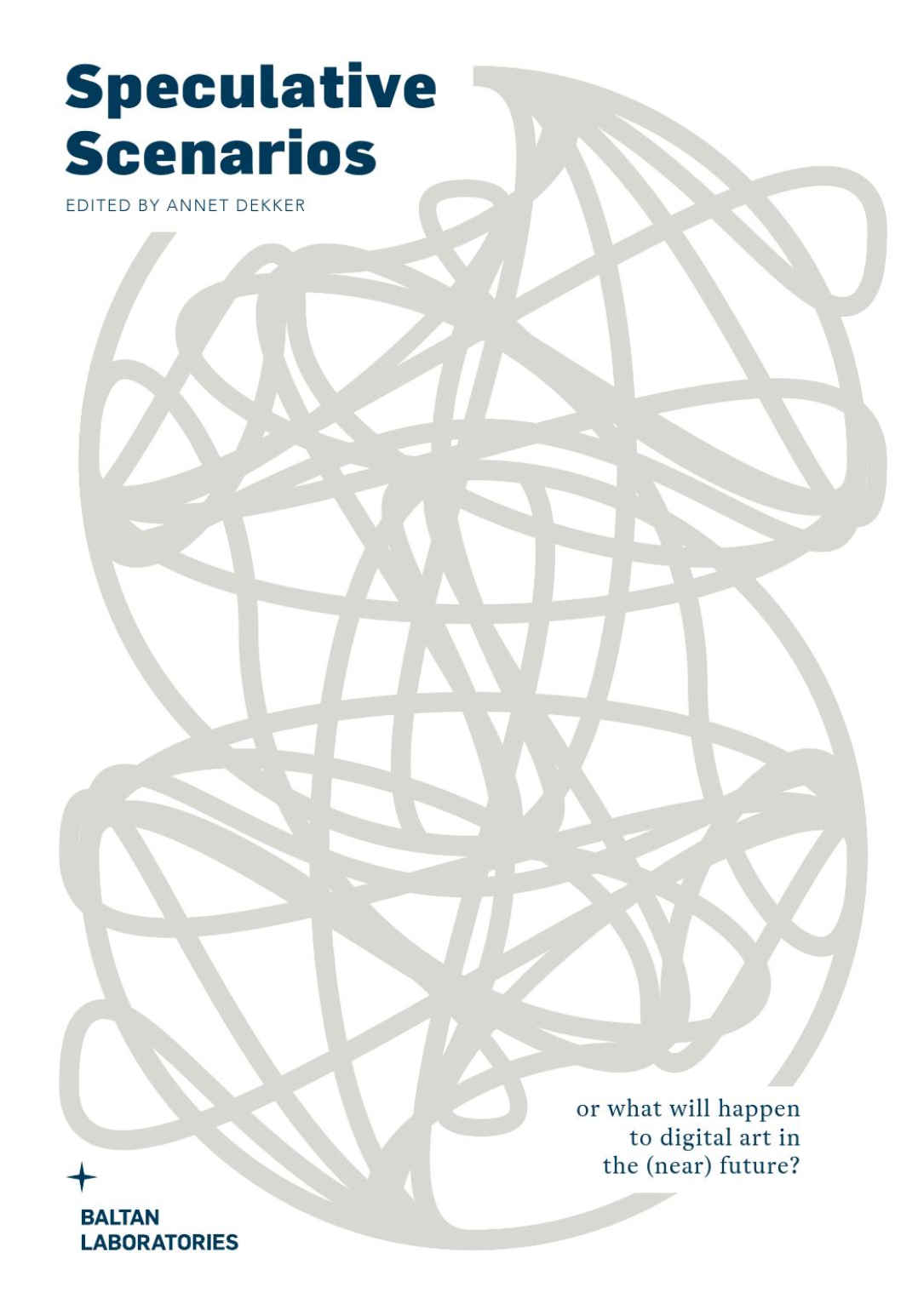 |
url |
| https://issuu.com/baltanlaboratories/docs/speculativescenarios_issuu |
Title |
| The Broken Timeline |
Author |
| Annet Dekker Gaia Tedone Marialaura Ghidini |
Year |
| 2021 |
Publisher |
| Online talk for the "Calculating Control" symposium by the Zentrum für Netzkunst, Berlin (GER) |
Description |
| ‘The Broken Timeline’ presents historical exhibition projects that were curated online. Inevitably partial and subjective, ‘The Broken Timeline’ burrows back in time to present a lineage of web-based curatorial projects that are too often unseen, neglected or ignored by the mainstream art worlds and their discourses. [Talk from 4:02:00 to 5:46:00] |
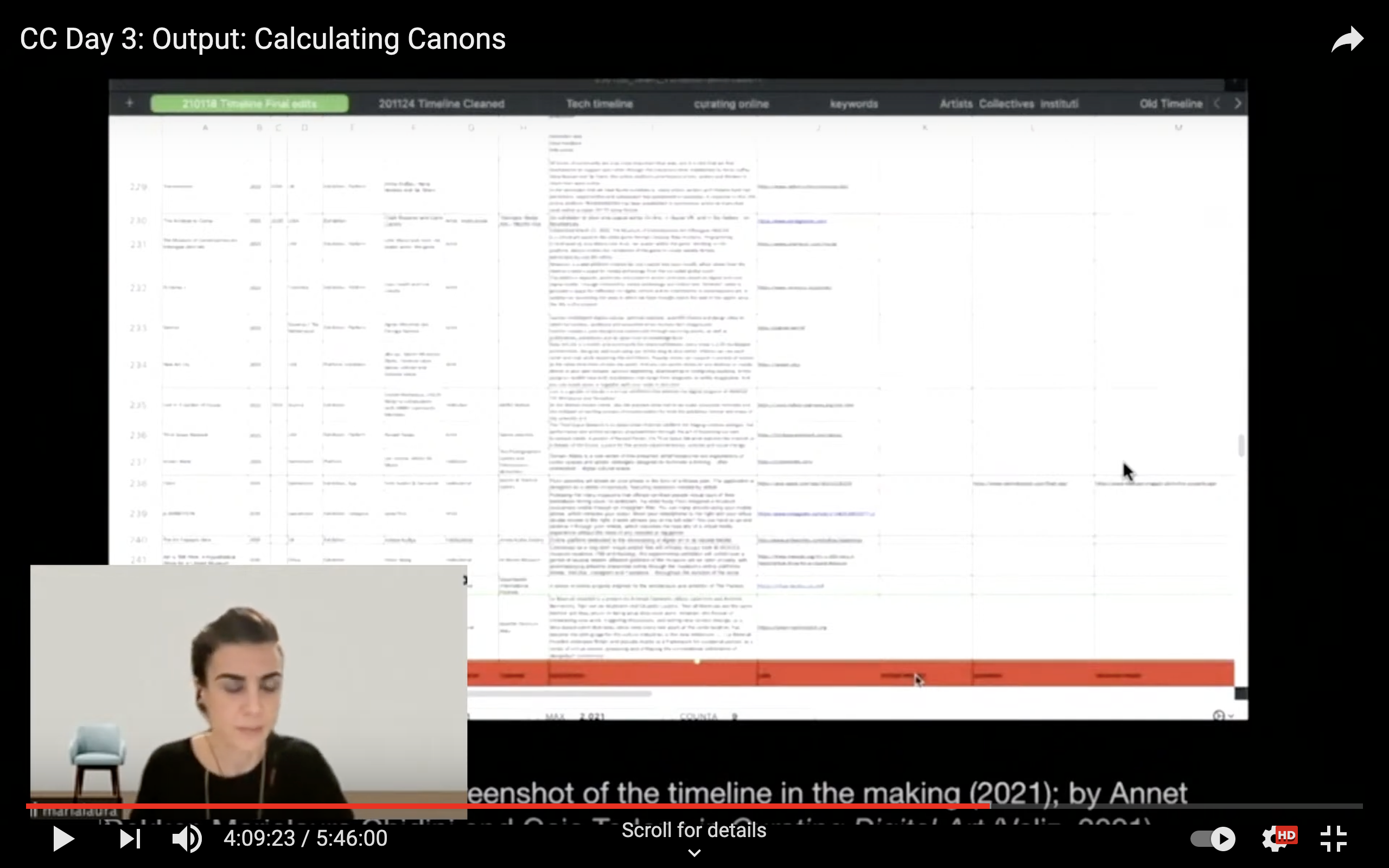 |
url |
| https://netzkunst.berlin/cc/item/TIL4ER4N?from=symposium |